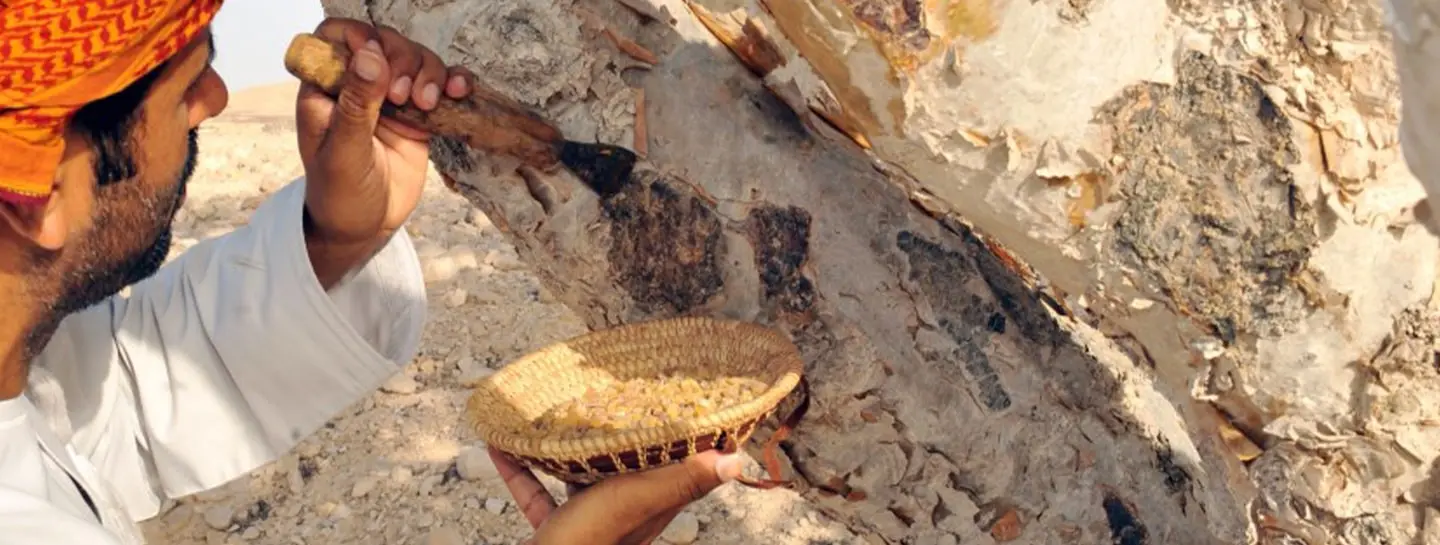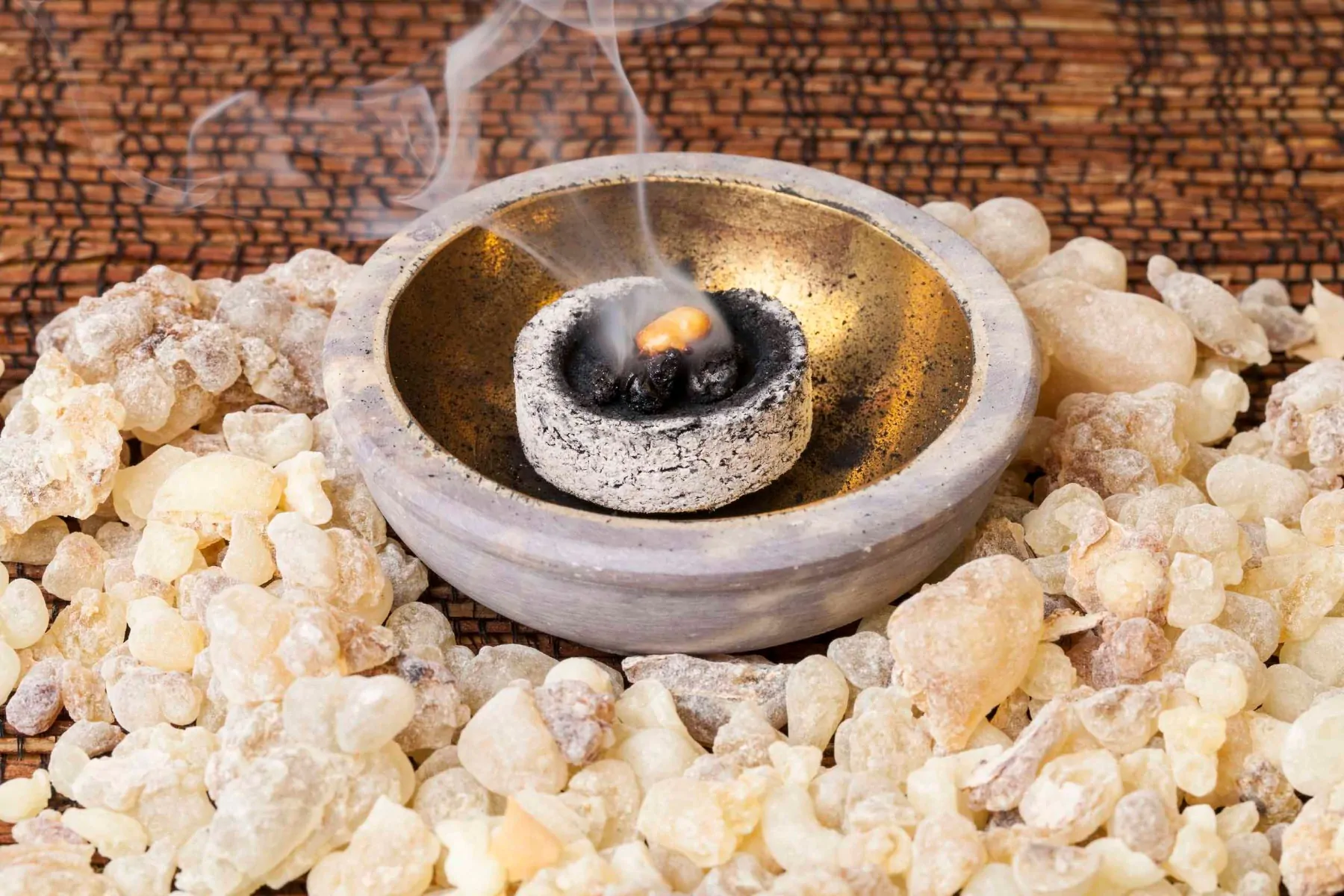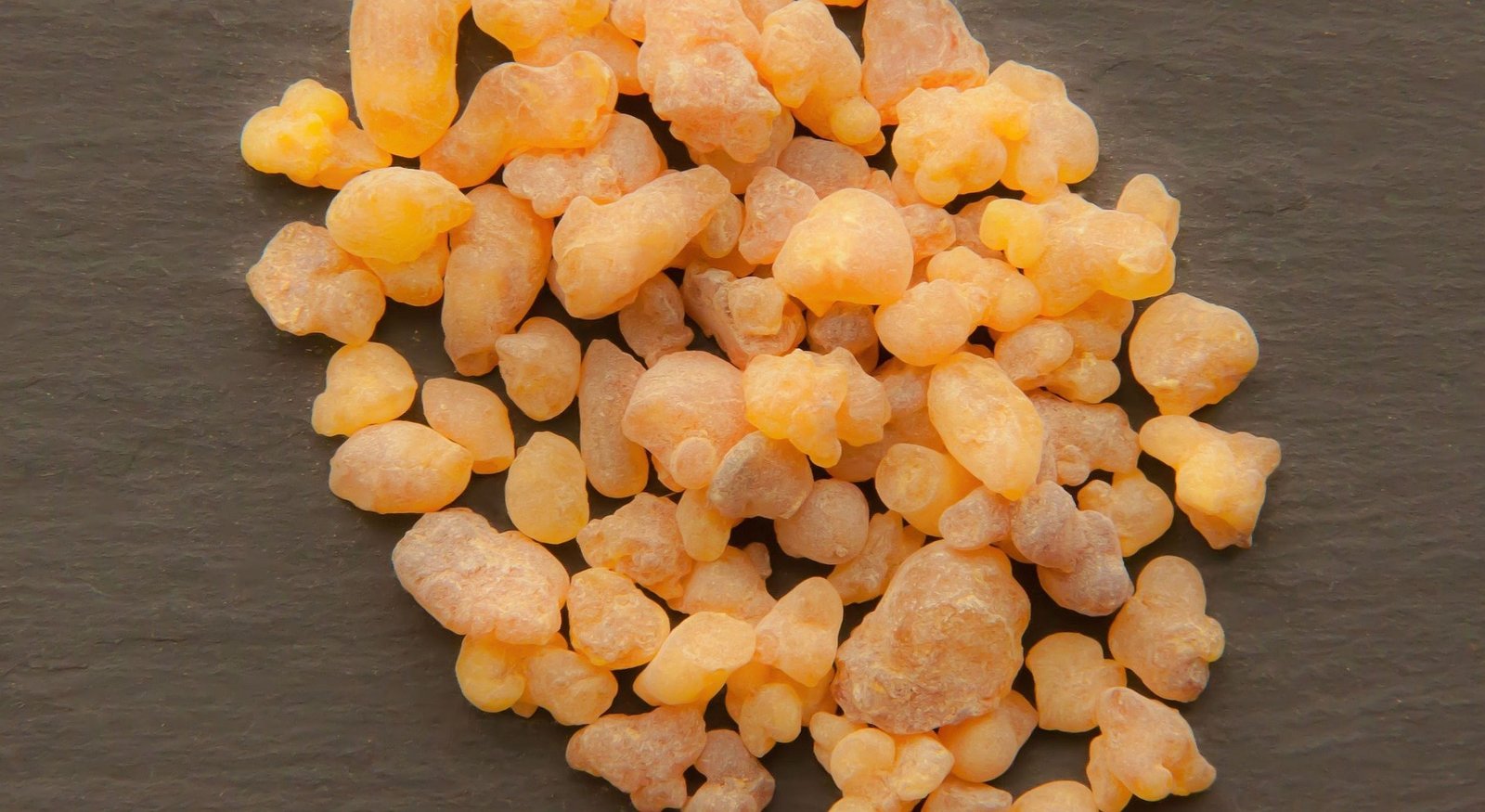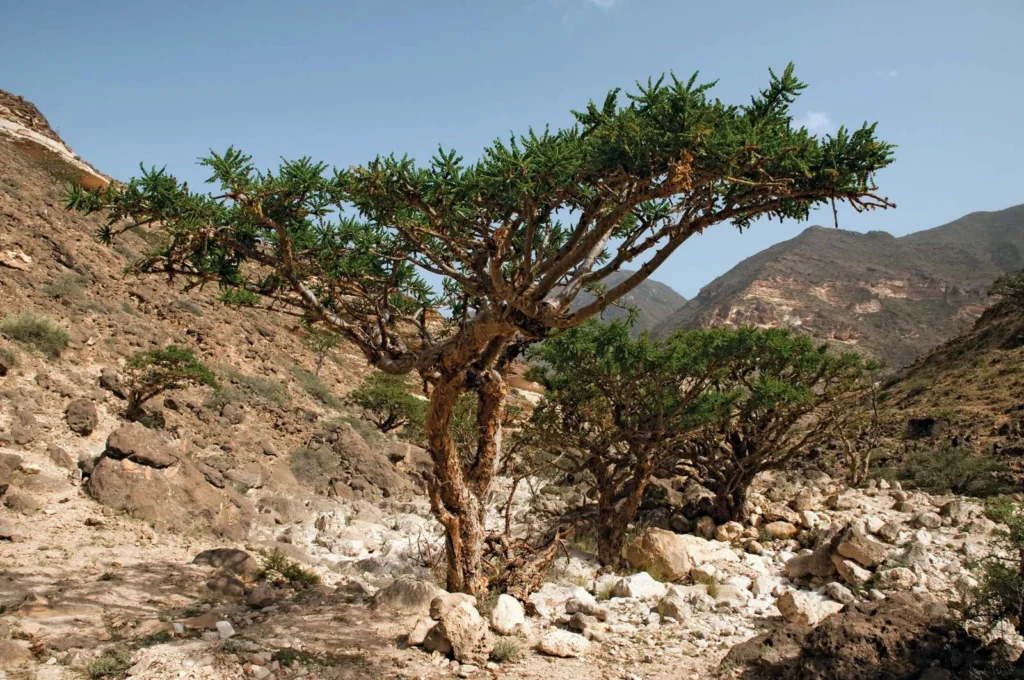Introduction
For centuries, the unique aroma of frankincense has graced palaces, temples, and family homes. It’s a scent synonymous with both royalty and divinity. A warm, balsamic, and slightly sweet aroma with undertones of wood and resin defines this ancient resin. It has been part of pivotal moments and high rituals. Think the pyramids of Egypt or the awe-inspiring cathedrals of Rome. In these spaces, frankincense has served as a bridge between the earthly and divine. So, what does frankincense actually smell like? And why does its complex aroma continue to enthrall us?
In this exploration, we will journey through time. We’ll retrace the steps of this ancient treasure. We’ll dive deep into its cultural and spiritual significance. Even today, it remains an aromatic gem cherished far and wide.

The Origins of Frankincense
Frankincense, known scientifically as Boswellia sacra, is a resin obtained from the bark of the frankincense tree. Its use dates back thousands of years, painting a vivid portrait of ancient societies and their intricate web of trade, spirituality, and culture.
Historical cultivation and trade in ancient societies: Originating in the Arabian Peninsula and the Horn of Africa, the frankincense trade flourished, creating bustling markets in ancient cities like Oman, Yemen, and Somalia. It was not just a commodity but also a symbol of affluence and divinity. It’s believed that Queen Sheba herself presented frankincense to King Solomon, highlighting its esteemed place in ancient trade relations.
The link to sacred rituals and ceremonies: Frankincense’s ethereal aroma made it a staple in religious and spiritual ceremonies. Its smoke, believed to purify the soul and surroundings, was used as an offering to the gods, solidifying its position as a bridge between the mortal and the divine. Its value was often equated with gold, a testament to its unparalleled significance in ancient times.
Geographical origins and the famed Incense Route: The Geographical origins of frankincense trace back to the Dhofar region of present-day Oman. The treacherous journey of merchants through arid deserts and mountainous terrains, known as the Incense Route, is a tale of resilience, determination, and the human spirit’s quest for the ethereal. Spanning from southern Arabia to the Mediterranean, this ancient trade route not only facilitated the exchange of frankincense but also laid the foundation for cultural interactions and the exchange of ideas.

What does Frankincense Smell Like?
When burned, frankincense releases an unmistakably rich, woody, and slightly citrusy aroma. But what exactly does Frankincense smell like, and what makes its scent so universally beloved and incorporated into various cultures and traditions?
Frankincense offers an aromatic experience like no other. Its scent, both warm and balsamic, evokes images of ancient forests, distant lands, and hallowed temples. There’s a certain depth to its fragrance, characterized by subtle hints of lemon and pine. Its multifaceted aroma is not just a sensory delight but also a mood-enhancer, transporting one to moments of tranquility and spiritual reverence.
Just as with any natural substance, frankincense has variations depending on its source and treatment. The primary grades depend on the time of harvesting. The best quality, often silvery or clear in appearance, is known as Hojari, which hails primarily from Oman. The lower grades, still aromatic but less intense, might have a more opaque or even brownish appearance. These variations influence the potency and nuances of the scent when burned.
Frankincense, with its versatile smell, often plays well with other fragrances. Blending frankincense with myrrh creates a deeper, more resinous scent, perfect for meditation and introspection. Meanwhile, combining it with sweeter aromatics like lavender or vanilla can produce a calming and comforting ambiance. Experimenting with blends can elevate the frankincense experience, allowing individuals to tailor its scent to their mood or desired atmosphere.
Frankincense in Religious Practices
Frankincense’s spiritual significance is as rich and diverse as the cultures that embraced it. Over the millennia, it has found its way into the heart of various religious practices, underpinning ceremonies with its serene aroma.
Christianity: One of the most iconic mentions of frankincense in Christian lore is the biblical account of the Magi. These wise men from the East visited the newborn Jesus and offered gifts of gold, myrrh, and frankincense. But why frankincense? In Christian symbolism, it’s often interpreted as a representation of Christ’s priesthood, a nod to his divine nature. Even today, the smell of frankincense is a staple in many Christian churches, its ascending smoke symbolizing prayers rising to the heavens.
Buddhism & Hinduism: In Eastern religious practices, the use of incense has been deeply ingrained. Temples often filled with the calming scent of frankincense, facilitating a meditative environment conducive to introspection and spiritual connection. In Hindu rituals, it’s not uncommon for frankincense to be a part of the offerings made during poojas, its fragrance purifying the space and inviting the presence of deities.
Ancient Egyptian practices: The Ancient Egyptians held frankincense in high regard. Beyond its role in religious ceremonies, they incorporated it into their mummification process. The resin acted as a preservative and an aromatic offering to the gods, ensuring the departed’s safe journey to the afterlife. Additionally, hieroglyphics often depict the trading and gifting of frankincense, pointing to its significance in diplomatic and cultural exchanges.

Health and Wellness Benefits
Beyond its role in religious ceremonies and its captivating aroma, frankincense has been revered for its potential health and therapeutic benefits. Traditional systems of medicine have used it extensively, and recent research has been uncovering some of its profound effects.
The calming and meditative effects of burning frankincense: One of the most universally acknowledged benefits of frankincense is its calming effect. When inhaled, compounds in frankincense are believed to transmit signals to the brain’s limbic system, which governs emotions. The result? A sense of peace, reduced anxiety, and heightened spiritual awareness. Many individuals claim that burning frankincense aids in deep meditation, allowing a clearer mind and promoting relaxation. Want to know more about how to use incense for relaxation? Read our in-depth post “How to use incense for Relaxation”.
Potential anti-inflammatory and anti-oxidative properties: Historically, frankincense resin has been consumed or applied as an oil for its purported health benefits. Recent studies suggest that certain compounds in frankincense have anti-inflammatory effects, which could be beneficial in managing conditions like arthritis. Additionally, its antioxidative properties can play a role in neutralizing free radicals, potentially delaying aging and fighting oxidative stress-related diseases.
Use in aromatherapy and traditional medicines: Aromatherapists often incorporate frankincense essential oil into their repertoire. Its soothing aroma, combined with its potential health benefits, makes it a favorite for tackling issues like insomnia, chronic stress, and respiratory problems. In traditional medicines, especially Ayurveda and Chinese medicine, frankincense has been used to treat a myriad of conditions, ranging from digestive issues to skin ailments.
Choosing the Right Frankincense Incense for You
With the multitude of options available today, how does one select the perfect frankincense incense? From purity to preparation, understanding a few key aspects can enhance your aromatic journey and ensure you experience the true essence of this ancient resin.
The difference between pure frankincense resin and pre-made incense sticks/cones: Frankincense can be found in its raw resin form or as pre-made sticks and cones. The raw resin, often small, crystallized tears, can be burned on charcoal discs to release its full, unadulterated aroma. Pre-made sticks and cones, while convenient, may contain additional binders or fragrances. They provide a more controlled burn but might slightly alter the pure scent of frankincense. Depending on your preference for authenticity versus convenience, you can choose between the two.
Brands and suppliers known for quality: Quality varies in the world of incense, and frankincense is no exception. Opting for reputed brands or suppliers ensures you get a product close to its traditional roots. Research and reviews can guide you to brands renowned for sourcing authentic and sustainably harvested frankincense. Some top brands include Igneous, The Royal Incense, and Govinda.
Price ranges and what to expect at different price points: The cost of frankincense incense can vary based on its origin, grade, and processing. Premium grades often fetch a higher price due to their unparalleled aroma and purity. However, mid-range options still offer a delightful aromatic experience without breaking the bank. As with most things, you get what you pay for, but even budget-friendly frankincense can transport you to ancient lands and spiritual realms.

Incorporating Frankincense into Modern Living
In our fast-paced, modern world, the allure of ancient traditions can offer a soothing balm to the relentless hustle. Frankincense, with its storied history and multifaceted benefits, can be seamlessly integrated into contemporary lifestyles, providing a touch of antiquity and serenity.
Daily rituals to elevate your space: Starting or ending your day with the calming fragrance of frankincense can help ground you. Set aside a few minutes each day, perhaps during your morning coffee or evening wind-down, to burn a little frankincense. The act alone, combined with its aroma, can be a daily meditation, centering your thoughts and energies.
Enhancing work-from-home environments: Many of us now operate in home office settings. Introducing frankincense to this environment can improve focus, alleviate stress, and create a serene ambiance. Whether it’s during a challenging task or a much-needed break, let the aromatic embrace of frankincense guide you through your workday.
Personal care and self-pampering: Frankincense isn’t limited to just incense. With its potential therapeutic properties, it’s found its way into skincare products, essential oils, and spa treatments. Consider introducing frankincense-infused products into your skincare routine or enjoying a frankincense essential oil massage.
Gift-giving with a touch of history: Searching for a unique gift idea? A beautifully packaged frankincense incense set can be a thoughtful present, introducing loved ones to its historical significance and aromatic charm. Coupled with an elegant burner or diffuser, it’s a gift that resonates with both the heart and senses.
Preserving the Legacy of Frankincense
As we immerse ourselves in the enchanting world of frankincense, it’s crucial to acknowledge its current status in the wild and the efforts undertaken to ensure its sustainable future. Frankincense trees, like many natural wonders, face challenges, emphasizing the importance of responsible sourcing and use.
The status of the frankincense tree in the wild: Over-harvesting and climate change have put a strain on wild frankincense populations. Excessive tapping, wherein the tree is wounded to extract resin more frequently than it can withstand, weakens these trees and makes them susceptible to diseases and pests. Moreover, the changing climate has affected regions where these trees naturally thrive, leading to concerns about their long-term survival.
Sustainable harvesting and fair trade: The demand for sustainable and ethically sourced products has never been higher. Thankfully, initiatives are underway to promote sustainable harvesting practices of frankincense. By supporting suppliers who adhere to these practices, consumers play a direct role in preserving the frankincense legacy. Fair trade practices also ensure that local communities, the guardians of these precious trees, are compensated fairly and involved in conservation efforts.
Supporting conservation efforts: Organizations and researchers are actively working to understand frankincense trees better, their needs, and how best to conserve them. Donating to or supporting these groups can have a lasting impact. Additionally, spreading awareness about the importance of sustainability, particularly concerning frankincense, can influence buying habits and corporate sourcing practices.
Making informed purchasing decisions: Each purchase is a vote. By opting for products that prioritize sustainability and ethical sourcing, you encourage the market to uphold these values. Brands that transparently share their sourcing practices and commit to sustainability are not only preserving frankincense for future generations but also upholding the rich cultural and spiritual traditions associated with it.
Conclusion
Despite the vast technological and societal changes over millennia, the smell of frankincense remains undiminished. Its scent evokes ancient caravans crossing deserts, grand temples filled with reverent prayers, and simple moments of personal reflection. The timelessness of frankincense is a reminder of the enduring beauty and profundity found in nature’s offerings.
Each individual’s encounter with the smell of frankincense is unique. Whether it serves as an aromatic backdrop for meditation, a therapeutic ally, or simply a fragrant memory from a distant place, frankincense has a way of embedding itself in one’s soul. It’s an invitation to form a personal relationship, to discover and weave your own story with this ancient resin.
The story of frankincense is ongoing, and we all have roles to play. Embracing its history and significance, prioritizing sustainable and ethical choices, and simply taking a moment to enjoy its fragrance are all steps towards a future where the legacy of frankincense thrives. As consumers, guardians, and admirers, the future of frankincense is, in many ways, in our hands.





